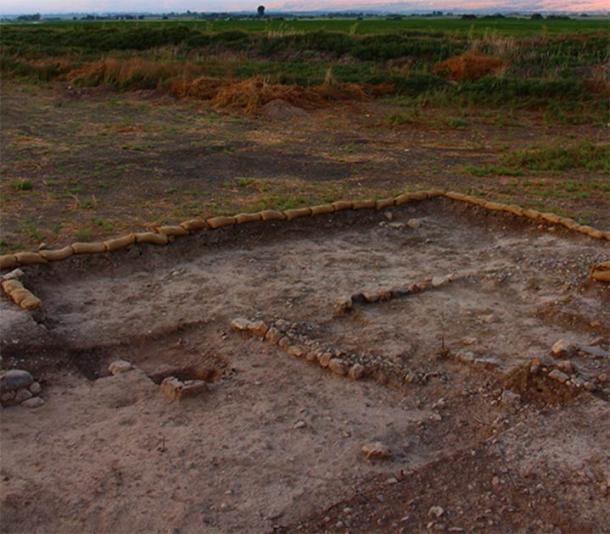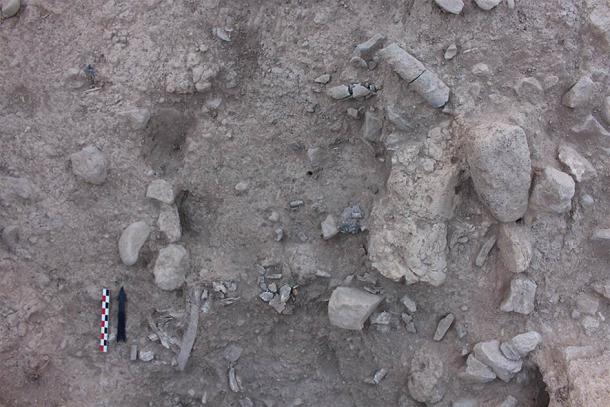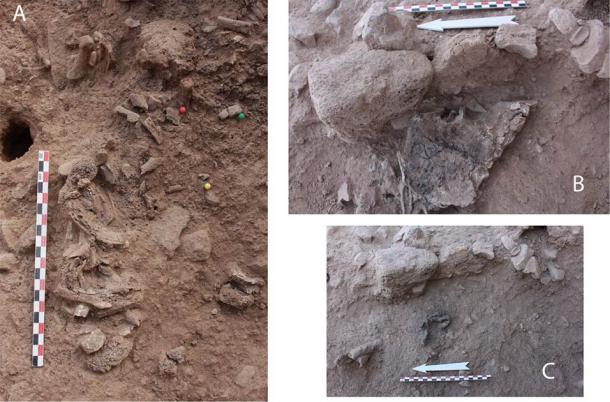Archaeologists have unearthed parts of a nine thousand-year-old individual’s body in Israel who was burned or cremated in a ritualistic way. This discovery has established a new milestone for the oldest known cremation ever found in the Near East. A new paper published on PLoS ONE by a team of scientists from the French National Centre for Scientific Research , says the young adult’s burned remains were discovered in a pit in northern Israel that they’ve dated to between 7013 BC and 6700 BC. This remarkable discovery represents “The oldest known cremation in the Middle East .”
Oldest Known Cremation: Cultural Shift in Funeral Practices
The man’s body was discovered at an excavation at the Neolithic archaeological site of Beisamoun which was discovered in 1945 in northern Israel, near a small Palestinian Arab village, about 16.5 kilometers (10.25 miles) northeast of Safad. The scientists deduced that the man had been intentionally burned in a “pyre-pit” as part of a funerary process . The 9,000-year-old cremated remains mark what is described in the new paper as an early “cultural shift in funeral practices.” Based on the evidence found so far from this 9,000-year-old corpse, this new style of dealing with the bodies of the dead required temperatures over 1,300 degrees Fahrenheit (700 degrees Celsius).

The Beisamoun pyre field, where the cremated burial site remains were discovered in northern Israel. ( © Mission Beisamoun )
According to lead researcher Dr Fanny Bocquentin, the body was put in the ground in a sitting position inside a pit that appeared to have been built with an open top and “strong insulating walls.” All that remained of the cremated individual were the feet, ribs, shoulders and part of the man’s left arm. Further forensic inspection of the individual’s shoulder blade led to the discovery a small flint projectile point embedded in the left shoulder bone. The bone healing process indicates that the person died a few months after being hit by the projectile.
How Do Researchers Know So Much About A Death in 7000 BC?
You might be wondering how scientists could determine this was an intentional cremation of an individual. Who’s to say the man didn’t accidentally set himself on fire and fall into a pit lined and ready to store food? Or perhaps the shoulder injury caused an infection that the tribe felt could infect others and he was burned for sanitation reasons. The find in Israel is especially fascinating because of all the telling forensic evidence found in the pit.

Excavation of the pyre pit. (© Mission Beisamoun)
The U-shaped cremation pit was 31 inches (80 cm) wide and 24 inches (60 cm) deep and archaeologists discovered it had been “lined with reddish mud plaster” similar to the bricks used by Neolithic people at this time in their homes. The pit was also believed to have been lined with flowers based on a study of the ashes. The study researchers also said that “it appears that the burial pit was designed to function as a kiln.” And with such a range of evidence it becomes clear that this person was cremated, and that the cremation was a ritual at that time 9,000 years ago.

Picture of bones in situ: A. Segment of axial skeleton: ribs and vertebrae exposed in the middle of the structure. B. Right coxal in situ; preserved almost complete by a piece of collapsed mud wall (see Fig 2D ). C. Four right pedal proximal phalanges found directly under the right coxal. (© 2020 Bocquentin et al / PLoSONE)
Measuring The Nature Of A 9,000-Year-Old Fire
The study researchers also provided their conclusions of how the individual was burned. In terms of “funerary processes,” the corpse was arranged in a “seated position” in the pit with his upper body leaning against the southern wall. Dr Bocquentin wrote that it is possible that the body had originally been placed on a wooden pallet above the pyre because the bottom of the pit doesn’t show signs of burning. This could be because the fire wasn’t as hot at its base. However, the walls of the pit were all found to be heavily charred because the fire would have been hotter in the oxygenated air, higher up, the researchers wrote in the study. And when the body began to burn, the upper torso fell forward, rotated, and then stayed in that position for the next 9,000 years.
In the conclusion section of the study, Dr Bocquentin wrote that cremation is a redefinition of “the place of the dead in the village and in society.” The discovery dates to an important period of transition in funerary practices in this region of the world, when old traditions were replaced by new practices such as cremation. One could say that these kinds of changes, including cremation, set the ancient world “on fire!”
The full report is available from PLoS ONE, doi.org/10.1371/journal.pone.0235386.
Top image: From the archaeological site of the oldest known cremation in the Middle East found in Israel Source: © mission Beisamoun / PLoSONE
By Ashley Cowie
References
Bocquentin F, Anton M, Berna F, Rosen A, Khalaily H, Greenberg H, et al. (2020) Emergence of corpse cremation during the Pre-Pottery Neolithic of the Southern Levant: A multidisciplinary study of a pyre-pit burial. PLoS ONE 15(8): e0235386. doi.org/10.1371/journal.pone.0235386
 RSS Feed
RSS Feed















 August 14th, 2020
August 14th, 2020  Awake Goy
Awake Goy  Posted in
Posted in  Tags:
Tags: 













